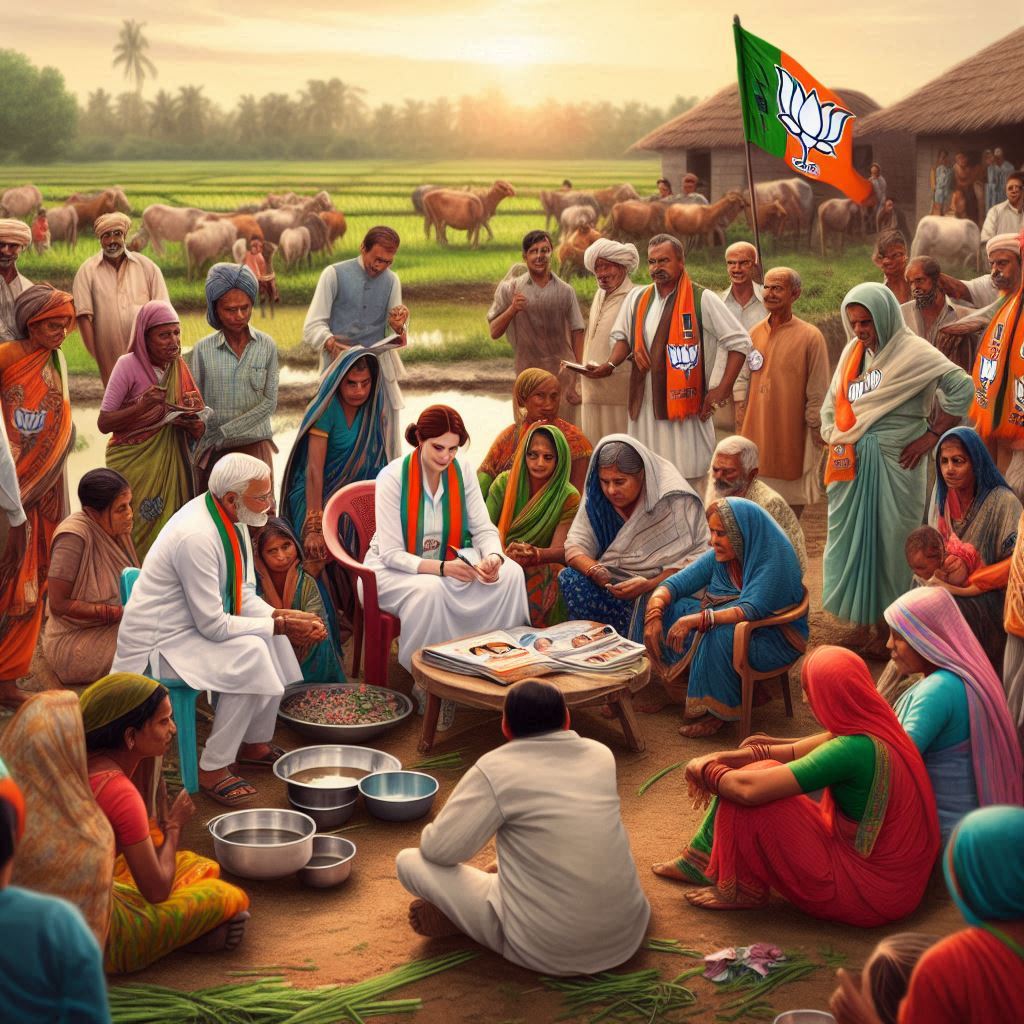
What is Subaltern Hindutva ?
Subaltern Hindutva refers to the strategy employed by the Bharatiya Janata Party (BJP) to incorporate and mobilize marginalized communities such as Backward Classes (BCs), Scheduled Castes (SCs), and Scheduled Tribes (STs) within the framework of Hindu nationalism. Traditionally, these groups have been outside the upper-caste dominated political and social structures. By engaging these communities, the BJP aims to broaden its base, counter the influence of regional parties, and present itself as a party that represents all Hindus, regardless of caste.
Fair Participation in Ministries and Party Executive Committees:
The BJP has systematically included representatives from BCs, SCs, and STs in significant political and administrative roles. By doing so, they aim to give these communities a voice and a stake in governance.The allocation of ministerial positions and key roles within the party’s executive committees to members of these communities demonstrates the BJP’s commitment to inclusion. This approach not only ensures representation but also helps in policy formulation that addresses the specific needs of these groups.
The Shekawath Doctrine, named after Bhairon Singh Shekhawat, is a strategic approach in the Bharatiya Janata Party (BJP) that emphasizes inclusivity, grassroots mobilization, and pragmatic alliances. This doctrine focuses on bridging social divides by including marginalized communities, strengthening local leadership, and ensuring alliances with the potential partners considering ideological feasibility.
Examples from Uttar Pradesh:
The BJP has focused on mobilizing non-Yadav Other Backward Classes (OBCs), such as Kurmis, Lodhs, and Nishads, who felt marginalized by the Yadav-dominated Samajwadi Party (SP). By promoting leaders from these communities, the BJP has successfully fractured the OBC vote bank that was once solidly behind the SP. Similarly, the BJP has targeted non-Jatav Dalits, such as Pasis and Valmikis, who did not find adequate representation in the Bahujan Samaj Party (BSP), traditionally led by the Jatav-dominated leadership. The BJP’s outreach to these communities has involved both symbolic gestures and tangible benefits, such as reserved seats in local governance and inclusion in welfare programs.
Subaltern Hindutva
- Inclusivity in Ideology: Subaltern Hindutva focuses on integrating lower-caste and marginalized communities into the broader Hindutva ideology. By doing so, the BJP aims to expand its support base beyond its traditional upper-caste constituency.
- Appealing to Cultural Identity: The strategy emphasizes a unified Hindu identity that transcends caste divisions. It promotes the idea that all Hindus, regardless of caste, share a common cultural and religious heritage.
- Representation: The BJP has actively included leaders from lower-caste backgrounds in its ranks and given them prominent positions. This is intended to signal inclusivity and provide a sense of representation to these communities.
- Economic and Social Programs: The party has implemented welfare schemes aimed at improving the socio-economic status of marginalized communities. These initiatives are designed to gain their political support by addressing their material needs.
Sanskritisation Approach
- Adoption of Upper-Caste Practices: Sanskritisation involves lower-caste groups adopting the rituals, customs, and practices of higher castes to gain social acceptance and improve their status. The BJP’s promotion of a unified Hindu identity can be seen as encouraging lower castes to align themselves with upper-caste norms and values.
- Religious and Cultural Emphasis: The party’s emphasis on Hindu festivals, rituals, and symbols helps facilitate Sanskritisation. By participating in these practices, lower castes may feel a greater sense of inclusion within the broader Hindu community.
- Promotion of Hindu Unity: Sanskritisation inherently involves a move towards a homogenous Hindu identity, which aligns with the BJP’s goal of fostering a cohesive Hindu community. This helps reduce the visibility of caste distinctions within the party’s support base.
Alignment of Strategies
- Cultural Integration: The BJP’s promotion of a unified Hindu identity mirrors the process of Sanskritisation, where lower castes adopt higher-caste practices. This cultural integration helps the party to position itself as a representative of all Hindus, regardless of caste.
- Political Representation and Mobilization: By including lower-caste leaders and addressing the concerns of marginalized communities, the BJP aligns with the aspirations of lower castes seeking upward mobility through Sanskritisation. This fosters loyalty and support from these communities.
- Welfare Initiatives: The party’s social and economic programs aimed at improving the lives of lower-caste individuals can be seen as a modern extension of Sanskritisation, providing tangible benefits in exchange for cultural and political alignment.
Criticisms and Challenges
While the Subaltern Hindutva strategy has been effective in broadening the BJP’s support base, it faces criticism and challenges:
- Tokenism: Critics argue that the inclusion of lower-caste leaders may be superficial and not result in substantial policy changes that address deep-rooted caste inequalities.
- Caste Tensions: Despite efforts to promote Hindu unity, caste tensions and divisions persist. The strategy may not fully overcome centuries-old social hierarchies and prejudices.
- Authenticity: Some question the authenticity of the BJP’s commitment to lower-caste issues, viewing the strategy as primarily a political maneuver rather than a genuine effort to address caste disparities.
In summary, the BJP’s Subaltern Hindutva strategy aligns with the Sanskritisation approach by promoting a unified Hindu identity, integrating lower-caste practices and leaders, and implementing welfare programs. This alignment aims to broaden the party’s appeal and create a cohesive political base while addressing the aspirations of marginalized communities for upward social mobility.

Kalyan Chandra
Kalyan chandra is a political strategist, media and communication consultant with the expertise in public relations, marketing, political research, election campaign management, psephology and digital analytics. He focuses on strategic political consulting, offering services that include competitive research, public opinion collection, and digital media management. Kalyan has significantly contributed to successful campaigns across India with his meticulous approach and deep understanding of the political landscape.
